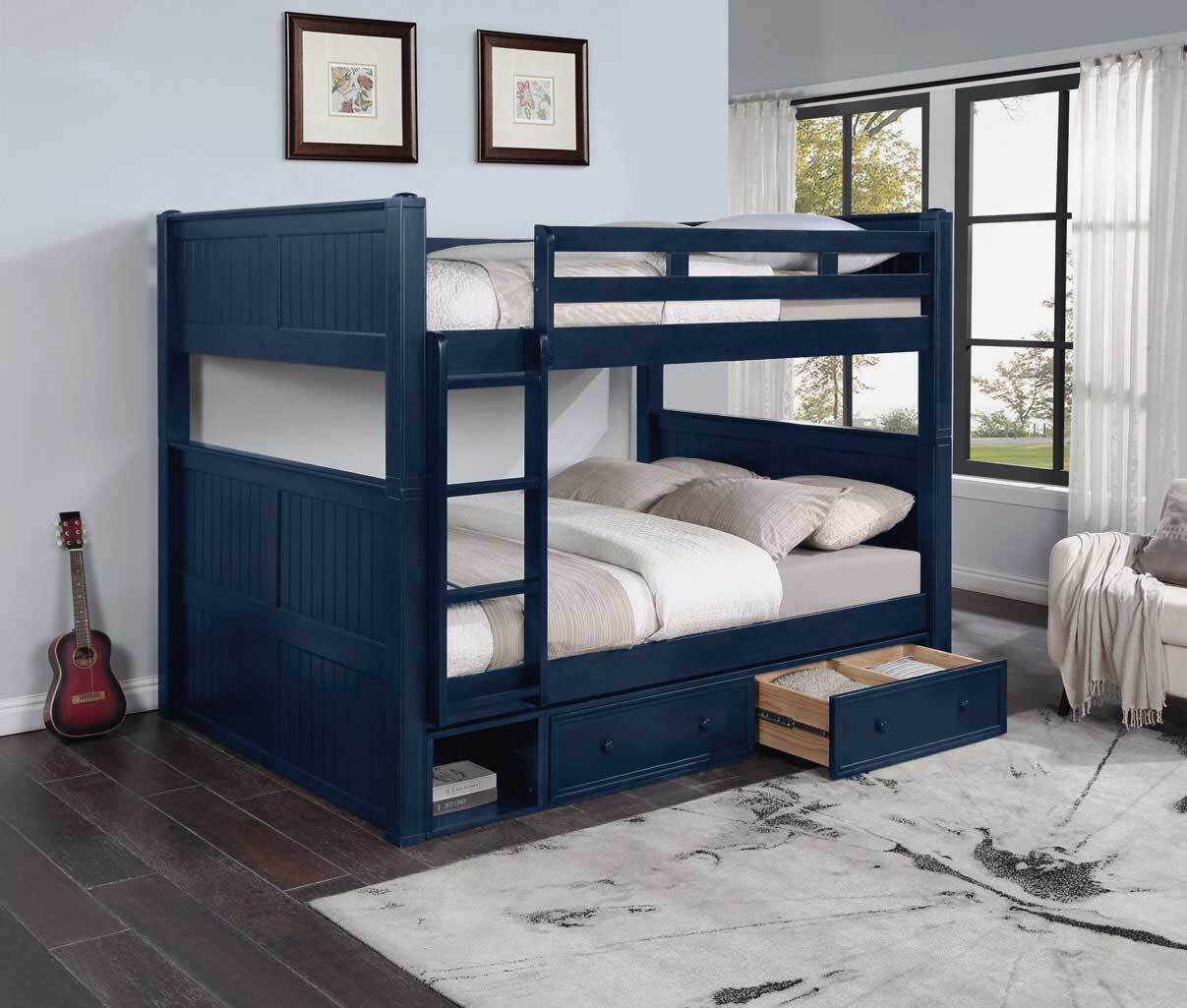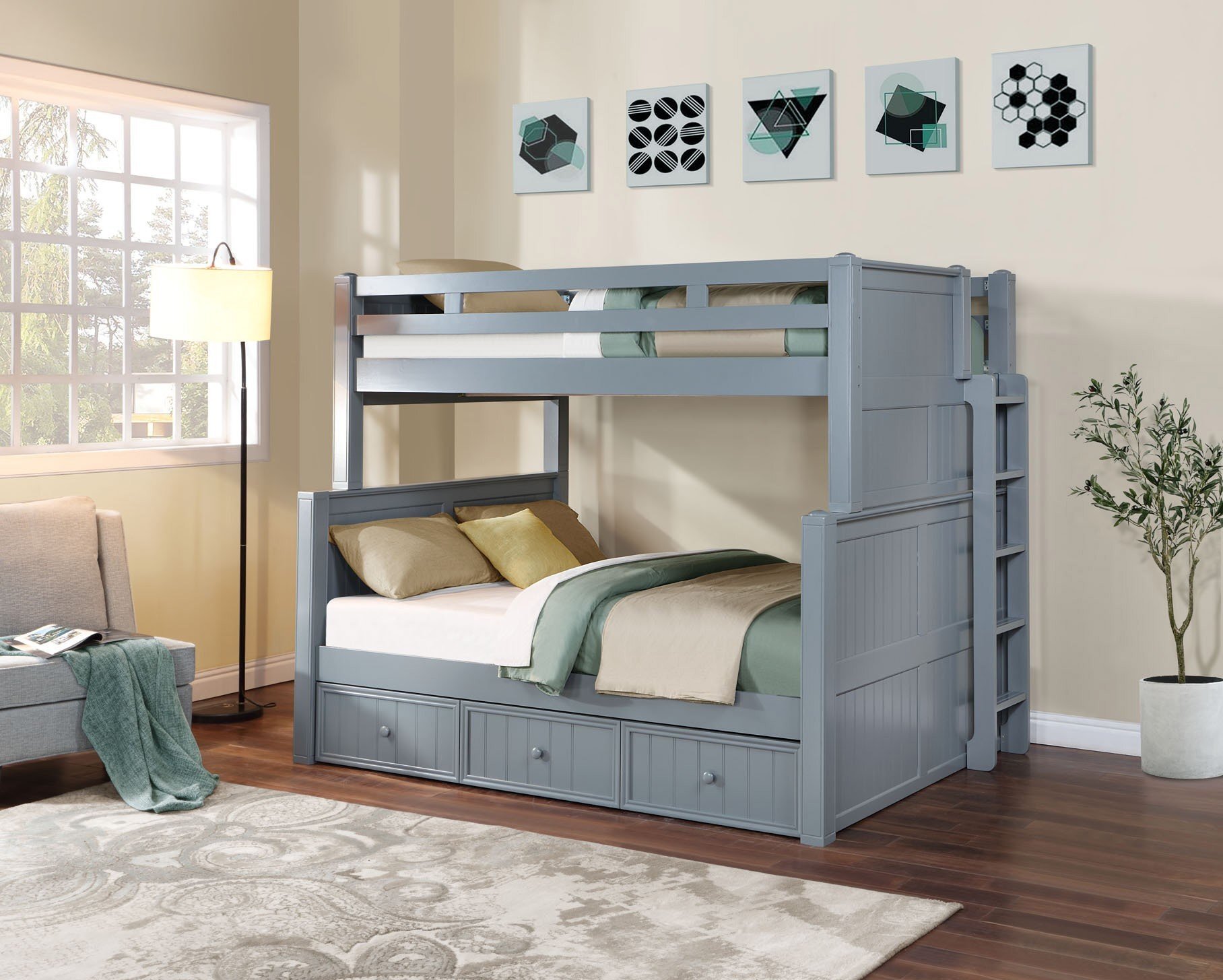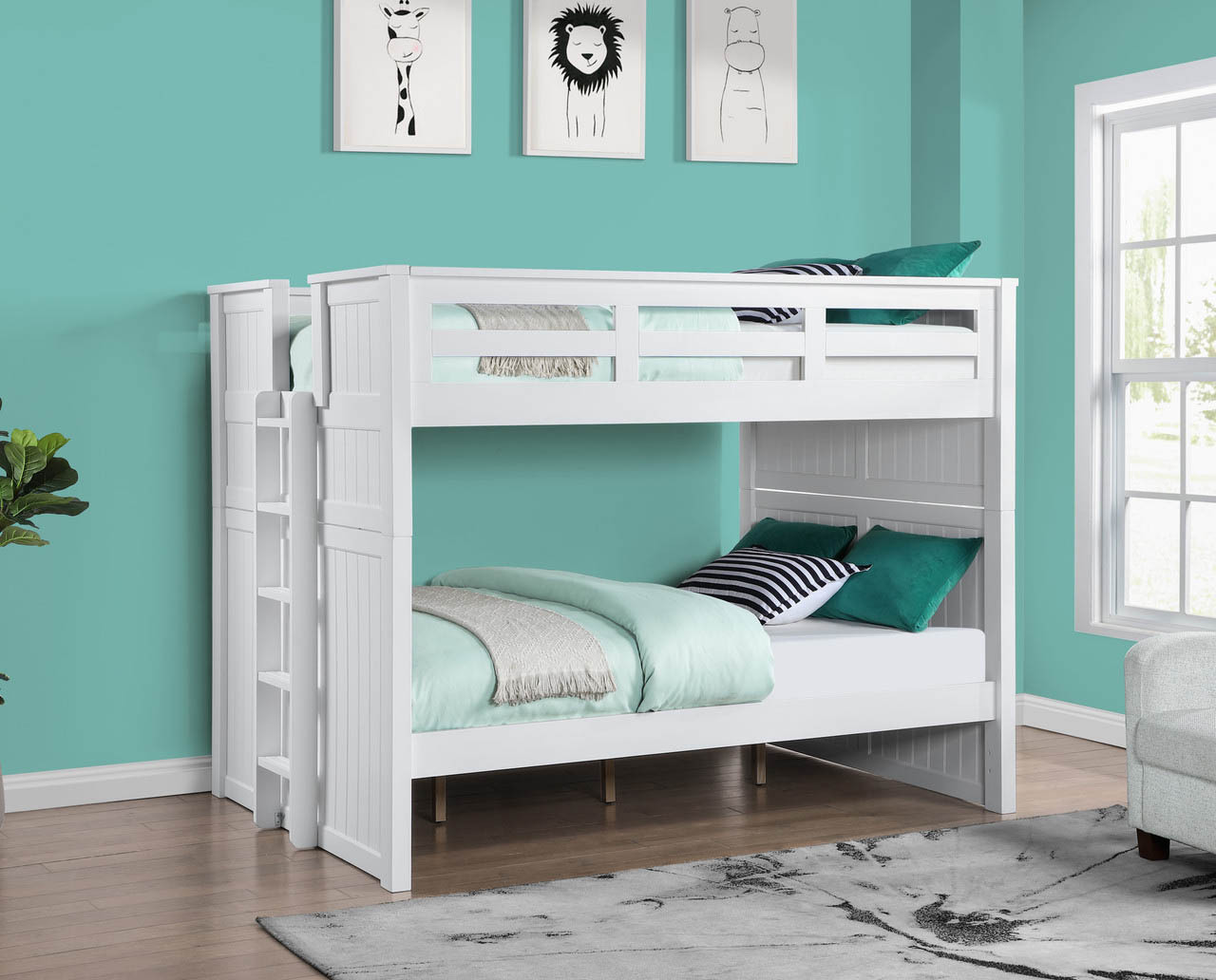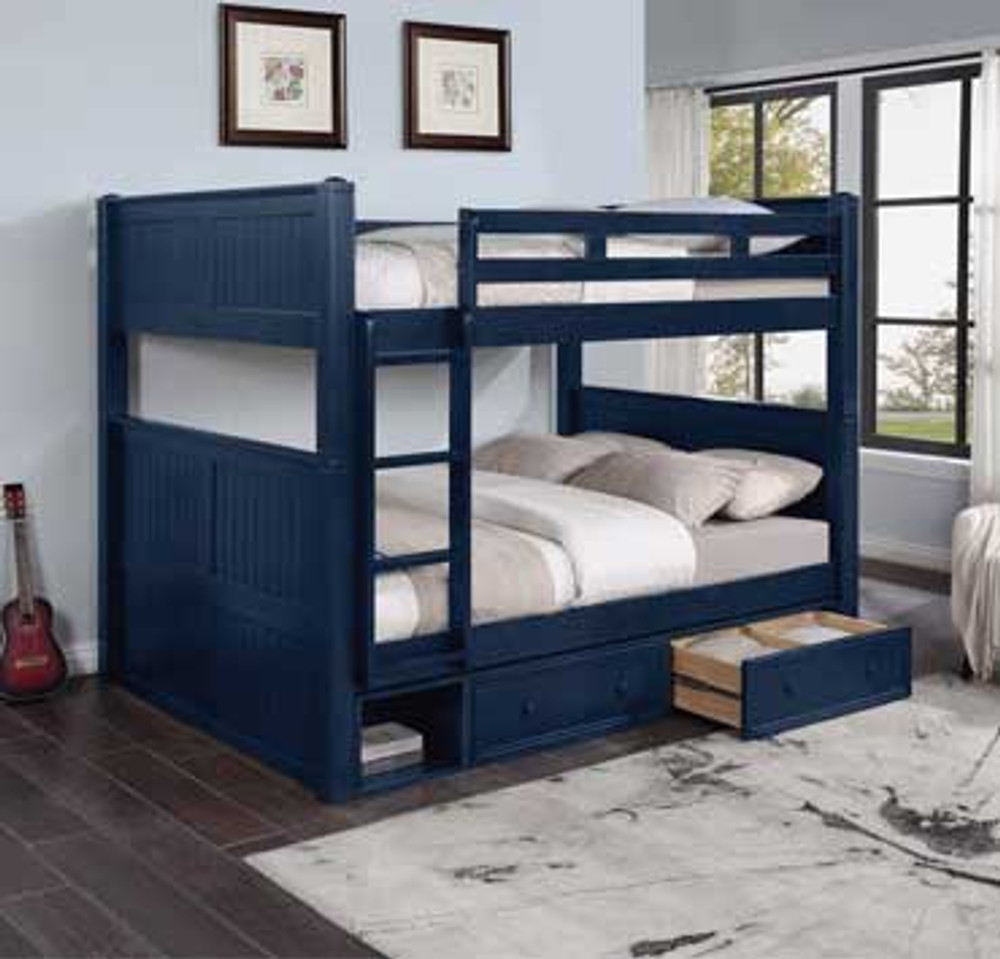How Safe Are Bunk Beds? - JustBunkBeds
Posted by UPW on Feb 10th 2025

Bunk beds have long been a staple in shared bedrooms, dormitories, hostels, and vacation homes, offering a practical solution for maximizing sleeping space. Their appeal extends beyond functionality—children often find them exciting, while adults appreciate their efficiency. However, concerns about safety frequently arise, particularly when considering bunk beds for young children or high-traffic environments.
Understanding the safety standards, recommended usage, and maintenance requirements of bunk beds is essential for ensuring they remain a secure and reliable sleeping option. Here, we explore the key safety considerations, from regulatory guidelines to best practices for different age groups, helping you make an informed decision when selecting a bunk bed.
Comprehensive Safety Guidelines for Bunk Beds
While bunk beds are practical, their elevated structure and multi-level design require adherence to strict safety standards to minimize risks. Manufacturers must follow regulatory guidelines to ensure stability, durability, and accident prevention.
Current Regulatory Requirements for Bunk Bed Safety
To prevent falls, entrapment, and structural failures, governing bodies such as the Consumer Product Safety Commission (CPSC) and ASTM International (ASTM) have established detailed safety regulations.
Guardrail Height & Spacing
The upper bunk must include guardrails on all sides, with a minimum height of 5 inches above the mattress surface to reduce fall risks. Openings between guardrails should not exceed 3.5 inches to prevent a child's head or limbs from getting stuck.
Ladder Stability
Ladders must be securely attached to the bunk bed, either as a built-in fixture or a reinforced detachable piece. They should provide a stable, non-slip surface for climbing and be positioned for easy access without obstructing movement.

Weight Capacity
Bunk beds should clearly specify their maximum load per bunk. Children’s bunk beds typically support 200–400 lbs. per level, while adult bunk beds can accommodate up to 800 lbs. per bunk.
Slat Strength & Mattress Fit
Slats must be thick and securely fastened to support the mattress and occupants without bowing or breaking. Additionally, the mattress must fit snugly within the bed frame to eliminate any hazardous gaps that could lead to entrapment.
Prohibited Features
Safety regulations prohibit sharp corners, protruding bolts, or fragile materials that could lead to injuries. Older bunk beds that lack these modern safeguards may not comply with current safety standards, making it essential to verify certifications when purchasing or using secondhand bunk beds.
Bunk beds that meet these regulations provide a structurally sound and safe sleeping arrangement for both children and adults. Ensuring compliance with these standards significantly reduces common safety concerns, making bunk beds a practical and responsible choice.
Best Practices for Bunk Bed Maintenance and Inspection
A well-maintained bunk bed remains stable, secure, and reliable over time. Frequent inspections help detect early signs of wear, ensuring that structural components function as intended. Proper upkeep not only enhances safety but also prolongs the bed’s usability.
- Tightening All Hardware – Screws, bolts, and fasteners can loosen due to daily use. Check and retighten all connections at least once a month to prevent wobbling or instability.
- Examining Structural Integrity – Inspect the bed frame for cracks, splintering, warping, or rust—particularly on wooden or metal components. Weak spots should be addressed immediately to avoid potential structural failures.
- Assessing Guardrails & Ladder Stability – Guardrails should remain firmly secured without excessive movement. The ladder should be properly attached and slip-resistant, with wide enough steps to ensure a safe grip.
- Monitoring for Excessive Wear – Bunk beds in high-use environments, such as children’s rooms, dormitories, or vacation rentals, may experience faster deterioration. Any damaged parts should be replaced rather than temporarily repaired, as weakened components can compromise safety.
- Proper Mattress Use – Mattresses should fit within the bed frame according to the manufacturer’s recommended thickness. Using a mattress that is too thick can reduce the effectiveness of guardrails, while one that is too small can create gaps that pose entrapment hazards.

Consistently following these maintenance practices ensures that a bunk bed remains safe, sturdy, and long-lasting. A well-cared-for bunk bed not only reduces accident risks but also offers continued functionality for growing families, guest accommodations, and shared living spaces.

What Is the Safest Age for Bunk Beds?
Bunk beds are commonly used in shared bedrooms, dormitories, and guest accommodations, but their suitability varies based on the user’s age, physical ability, and sleeping habits. Younger children face greater risks when using elevated sleeping surfaces, while teenagers and adults may require reinforced structures that accommodate their size and weight. Understanding when bunk beds are appropriate—and when to transition to a different sleeping arrangement—ensures both safety and comfort for long-term use.
Are Bunk Beds Safe for Children?
Children between the ages of 1 and 4 should not sleep in a bunk bed, particularly on the top bunk. The Consumer Product Safety Commission (CPSC) warns that young children have a significantly higher risk of injury due to falls, entrapment, and difficulty navigating ladders. At this age, developing motor skills and limited spatial awareness make climbing hazardous, increasing the likelihood of accidents.
Even if a bunk bed has full-length guardrails, small children may still roll out of bed or attempt to climb over the railing unsupervised. If a bunk bed is placed in a room with toddlers or preschoolers, the bottom bunk is the safest option, preferably one with low clearance to the floor.
Some models feature enclosed lower bunks with partial guardrails, creating a more secure sleeping space. Additionally, parents can consider installing removable ladder covers or placing temporary barriers to restrict access to the top bunk until the child is old enough to use it safely.
Are Bunk Beds Suitable for Teens?
Teenagers can safely use bunk beds as long as the bed’s construction supports their height and weight. Standard twin-over-twin bunk beds may become impractical for growing teens, especially those who require additional legroom or a higher weight capacity. XL and full-over-full bunk beds offer a more suitable alternative, accommodating both taller individuals and those who need extra space to sleep comfortably.
A reinforced frame is essential for teenage users, as they tend to shift positions more frequently during sleep. Solid hardwood and heavy-duty metal bunk beds provide greater stability than lightweight models, reducing wobbling and long-term wear. Additionally, models with a higher weight rating of at least 400–600 lbs. per bunk ensure safe and prolonged use.
Teenagers may also prefer loft bunk beds that incorporate study areas, seating, or storage underneath rather than traditional stacked configurations. This setup allows for more privacy and personal space, especially in shared bedrooms where individual areas are important.
When Should You Transition Away from a Bunk Bed or Loft Bed?
There is no universal age at which someone should stop using a bunk bed, as many models are built to accommodate adults. However, several factors indicate when it may be time to transition to a different sleeping arrangement:
- Structural Wear & Stability Issues – If the bed shows signs of damage, such as loose joints, weakened slats, or excessive creaking, it may no longer be safe for daily use.
- Exceeding the Weight Capacity – If the user exceeds the bed’s recommended weight limit, the structural integrity may be compromised, increasing the risk of collapse.
- Room Layout Changes – If a shared bedroom is no longer necessary or there is enough space for separate beds, transitioning to an individual bed may be more practical.
- Personal Comfort Preferences – Some individuals find that bunk beds become less comfortable as they grow older, particularly if they prefer a larger sleeping surface or easier accessibility.
There is no fixed timeline for when a bunk bed should be replaced, but certain factors can help guide the decision. If regular inspections reveal loose fittings, worn-out support slats, or a weakened frame, safety may become a concern. Monitoring these factors helps ensure both safety and comfort over time.

Conclusion: Ensuring Safe and Practical Bunk Bed Use
Bunk beds offer a space-efficient and versatile sleeping solution, but safety should always be the top priority. Choosing a model that meets ASTM and CPSC safety standards, performing regular maintenance, and selecting an age-appropriate configuration ensures a secure sleeping environment. For younger children, prioritizing lower bunks with guardrails can minimize risks, while reinforced frames and higher weight limits make certain models suitable for teenagers and adults.
At Just Bunk Beds, we provide a wide selection of high-quality, safety-certified bunk beds for all age groups and living situations. Whether you need a sturdy bunk for kids, a spacious option for teens, or a practical adult bunk for a guest room, we can help you find the perfect match. Browse our selection today or reach out for expert recommendations!

